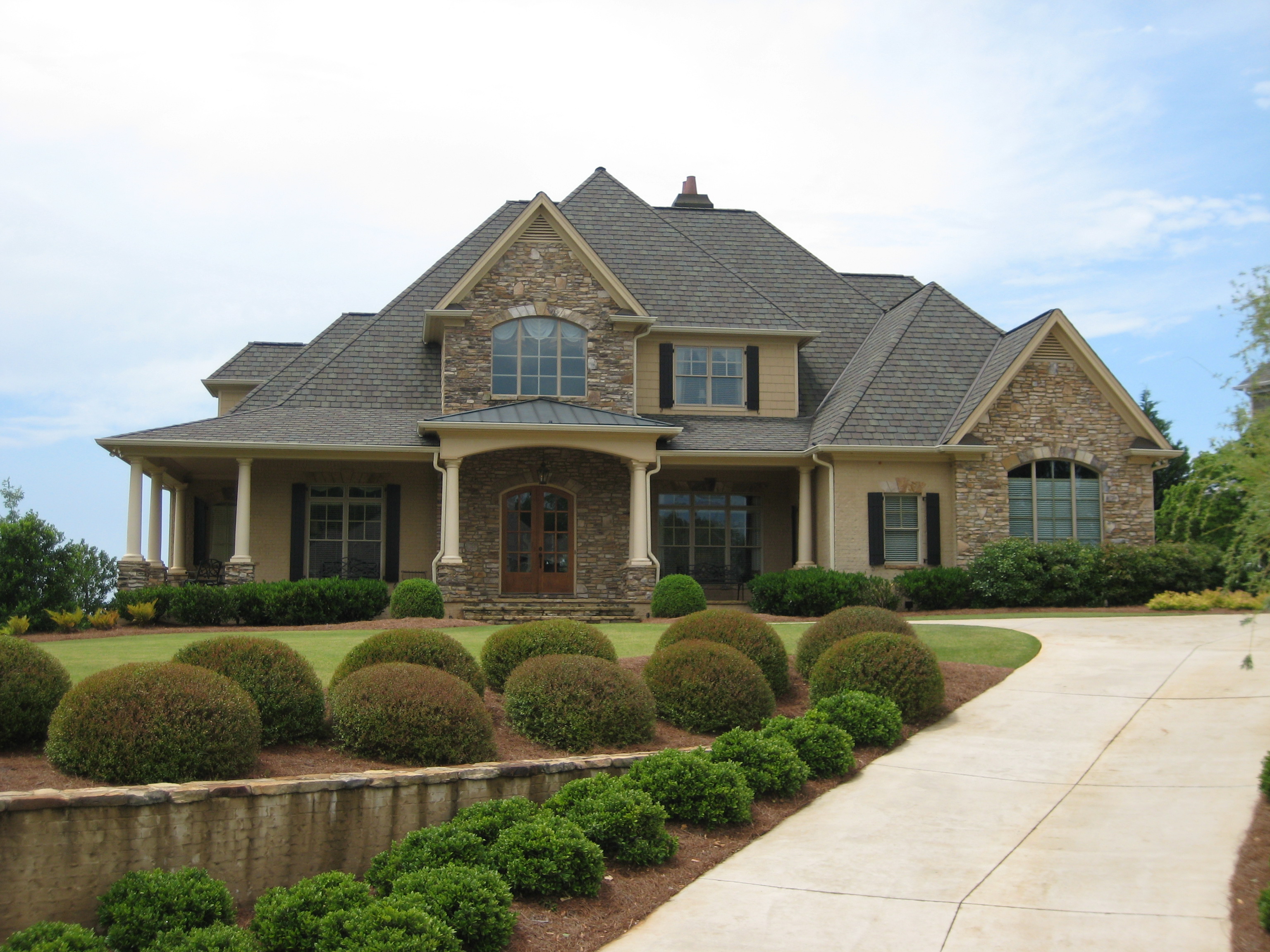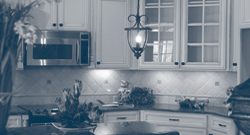Home Builder’s Checklist
Checklist for Building a House: What You Need to Know to Get Started
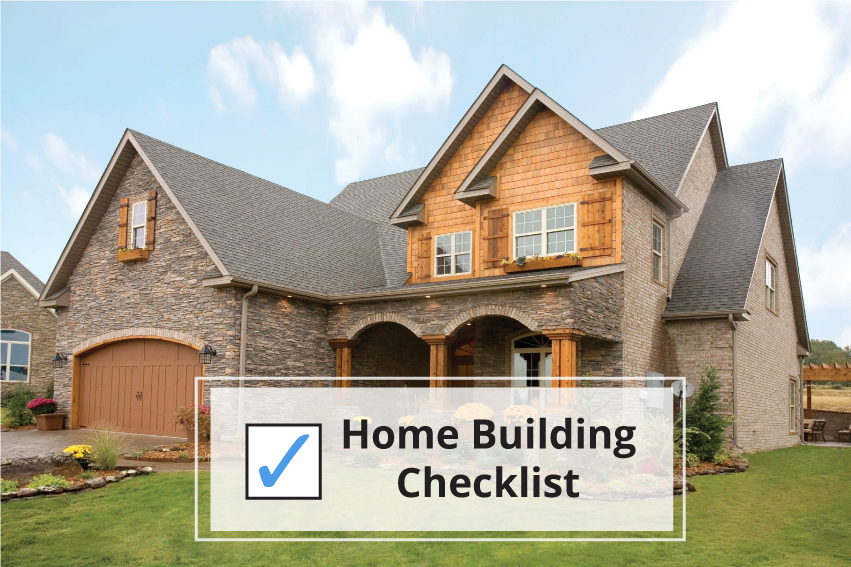
If you’re considering building a new home, or even if you’ve already started the building process, you’re not alone. As of March 2022, building permits for privately owned houses were authorized at a seasonally adjusted annual rate of 1,873,000. That number makes sense when you consider the main benefit of building your own home — getting everything you need to accommodate and enhance your family’s lifestyle.
However, building a custom home can be a complicated process. Homeowners who prepare by doing their research upfront can get better results than those who try to play it by ear.
We created this checklist to guide you through the process of building your new home. So whether you’ve already purchased a lot or need a place to start, this checklist can help you figure out your next steps.
Roles and Responsibilities
Understanding who is responsible for what task is critical to building a new home. This knowledge will help you stay organized and keep track of each decision in the homebuilding process. Who will be responsible for what? When can you rely on your builder, and which tasks fall into your court? Who will make important decisions?
It’s essential to understand what part each professional plays in the building process as well as who each person reports to. These professionals include:
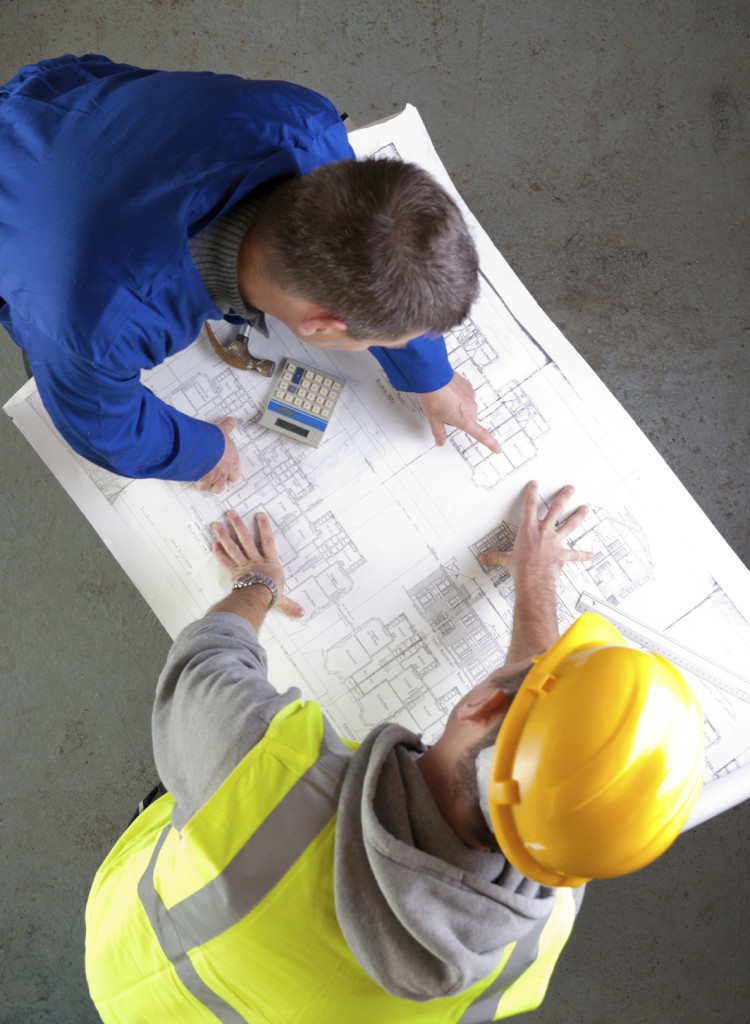
- Homeowners: Ultimately, as the homeowner, many decisions are up to you. As such, you must be available to answer questions when they arise. You must also be willing to do your part while meeting deadlines set by your builder. Make sure you clearly state what you want and ask questions whenever any come to mind. Perhaps you don’t care about which cabinets are used in the kitchen, but you’re particular about countertops. Either way, your builder needs a clear understanding of your preferences so you can agree on decisions in advance.
- Real estate agents: Real estate agents may play a role in your decision to build a custom home. Often employed by the homebuilder you work with, real estate agents will provide assistance in purchasing land for the build while coordinating the closing.
- Construction manager or homebuilder: The construction manager serves as an intermediary between you and the rest of your building team. This individual will assist in the planning process to ensure all your wishes are considered. They also make sure all deliverables are completed on time.
- Lenders: Lenders make purchasing your custom home possible by providing the necessary funds.
- Designers or architects: The architect works with the homebuilder to draw plans according to your specifications. These sketches ensure your home will meet your wishes from the beginning. At SDL Custom Homes, our designers and architects use 3D software to provide a unique “walk-through” experience before any building takes place.
- Civil and structural engineers: Engineers are vital contributors to the homebuilding process because they provide valuable insight into any issues that may arise during the build based on your location’s unique conditions.
- Specialty contractors: Specialty contractors, like HVAC professionals, painters and electricians, work within specific trades to fulfill individual pieces of the build. In most cases, custom homebuilders have existing business relationships with these professionals, meaning the homeowner doesn’t need to select their own providers. Many contractors collaborate during the building process, which can make the project more efficient overall.
- Inspectors: Field inspectors are responsible for reviewing architectural designs before beginning the building process and checking in throughout the project to ensure your team adheres to all codes and ordinances prior to the final sale.
Decision Making
When you’re building a home, decisions must be made. Quick decisions ensure that your team understands your goals, which helps keep the project on track. Include these questions on your building-a-house checklist and make sure you can answer them:
- Organization: How will I keep everything related to the project organized, including all my documents?
- Communication: Who is my main point of contact with the builder I have selected? How will I record communications between me and my builder?
- Responsibility: Who is the best decision-maker in my family — myself, my partner or my spouse? Do we disagree on any points? At what time will this person be available to make decisions and answer questions?
- Timeline: Do I have a reasonable completion date in mind? What benchmarks must be met to ensure I meet this deadline?

Financial Considerations for Your New Home
Having a thorough understanding of the costs associated with building a new home can ensure a smooth build and help you prepare for potential surprise expenses. Add the following considerations to your checklist:
- What you can afford: Speak with a few lenders to ask questions and find out how you can obtain the best interest rates. You should also understand the cost breakdown of the home you’re interested in. A new home can cost around $200 per square foot, so it’s important to focus on the features you want most. Discuss your options with your builder — they may also be able to help you find ways to cut costs.
- Credit report: Request your credit report prior to applying for financing and read it over to make sure it’s error-free. A clean credit score makes obtaining financing significantly easier.
- Down payment: Calculate a realistic down payment with the information already available to you. First, determine the maximum amount of cash you’ll have available for closing, then estimate how much you’ll actually need to close on your loan. Once you have those numbers, subtract your closing estimate from your maximum available cash — this number will be your maximum down payment.
- Mortgage: Research the types of mortgages available to determine which would be the best option for your financial situation. Your options may include a traditional mortgage, FHA, 15-year, 30-year and fixed or variable rate. Consult with your chosen lender for mortgage preapproval or prequalification.
Looking to cut costs as much as you can? Check out our tips to building a custom home on a budget.
Homebuilding Checklist Timeline
A solid time frame is essential to a new house checklist. To create your timeline, work with your builder to address the following:

- Your building timeline: In general, new home builds take approximately six months. However, homes with multiple custom features or larger sizes may take longer.
- The rationale for your end date: If you’re aiming to finish the building process by a specific date, ask yourself why. Do you want your home to be complete by the time your current lease expires, or do you have scheduling conflicts that would complicate the moving process? Be prepared to justify your chosen end date.
- The best time to begin: Understanding the seasons in your region is critical for building a home at the right time. It’s important to note, however, that a homebuilder can build a new home at any time of the year. If you’ve already decided on an end date, think about factors that could set your project back. For instance, if you live in a rainier, colder climate, you may encounter more delays during winter or spring than during the summer or fall.
Working With the Right Homebuilder
If your team isn’t right from the start, you could be dissatisfied with the final outcome. To be sure you have the right team in place as part of your checklist for building a house, consider the following:
- Your gut feeling — Do you feel confident in the builder you have selected? Do you sense transparency in the process? Do you have any doubts?
- References — Ask your builder for past client references. Call them. Ask about any holdups during the process and if they would work with the builder again. Ask to see pictures of completed projects.
- Trust — If you trust your builder, you can trust their subcontractor selections. If any problems do arise, reach out to your builder immediately for remediation.
- Questions — Ask your builder for information about anyone who will be working on your home. It’s within your rights to request background check information. Run an online search to see if anything questionable arises. Ask your builder how long they have worked with each subcontractor and why they’ve chosen these professionals for his or her team. In this case, experience matters.
How to Buy Land
Where you build your home is as important as the features you choose. Get a feel for the area by adding these tasks to your new house checklist:
- Ask your builder about extra expenses related to your lot: Will you need a well or septic tank? Will you need to create new power, phone or cable hookups that could increase expenses?
- Talk to locals: This will help you understand the neighborhood and find out if it’s a good fit for your family.
- Look into the school district: If you have children and you’re moving out of your current school district, you’ll want to ensure their new school will be a good fit. Do some research about the schools near your lot before you purchase.
- Walk the neighborhood: There’s no better way to understand the potential of a given piece of land than to understand what surrounds it.
- Consider your family’s interests: Are you looking for extensive outdoor space for recreational activities? Does soil type matter for gardening? Would you like room for outdoor entertaining? The size, shape and location of your chosen lot affect these factors.
Developing an Architectural Program
When you create an architectural program for your new home, you define the scope of your homebuilding project. Presenting this information to your architectural team gives them a starting point for their plans. Additionally, they can provide valuable input into what aspects of your project are possible and what things you may need to compromise on.
 The best approach to creating an architectural program is to start big and scale back. List everything you’ve been dreaming of regardless of limiting factors like price or zoning. As you get deeper into the process, you can adjust these lists as needed.
The best approach to creating an architectural program is to start big and scale back. List everything you’ve been dreaming of regardless of limiting factors like price or zoning. As you get deeper into the process, you can adjust these lists as needed.
Break your ideas down into four separate lists based on their importance to your project:
- Needs: Your “needs” list should include every architectural feature that your home absolutely must have for you to be happy with the finished product.
- Wants: Your “wants” list includes everything you’d ideally like in your new house. Unlike your needs, you’d be willing to settle on your wants.
- Dreams: This list should include things you would love to have but which may be out of your reach for financial or logistical reasons.
- Don’t wants: Knowing what you don’t want in your design in addition to what you do gives your architect a clearer idea of your specifications. They can avoid accidentally including something that you dislike in their designs, which can save time down the road.
Once you’ve determined which features are most important, finish your architectural program with the following steps:
- Form a backup plan: You may have to compromise on certain parts of your new home. Ask yourself what the next best choice is for all of your most important features. Deciding on backup options will ensure your project can stay on track because you won’t be scrambling to figure out replacements.
- Create a vision board: Gather images of things you want — and don’t want — to be in your home. Compile pictures digitally using sites like Pinterest, or clip your favorite images from home design magazines.
- Prioritize rooms: Consider which rooms you spend the most time in — for example, a kitchen, bedroom or bathroom. Your builder can help you find ways to ensure those rooms are included and prioritized in your plans.
Obtaining Insurance and Building Permits
Once you’ve purchased a lot and have financing in place, you must obtain insurance and building permits. Take the following steps to do so:
- Become familiar with the building permit process: Your builder should contact your local municipality to ensure you have the proper permission to build on your lot. If your builder does not provide this service, you will need to take steps on your own to check that all permits are in place. This step is critical to your build’s success.
- Ensure general liability insurance is in place: This can be provided by you or by your builder. Working with a fully insured builder is always the best course of action.
- Ensure workman’s compensation insurance is in place: This type of insurance makes sure you or the builder are not held responsible should any workplace injuries occur on your job site. Worker’s compensation is required for companies that manage employees.
Designing a Custom Home
Consider these questions when you begin working on your custom home design:
- What features are most important to me? What must I have to be comfortable?
- Could any issues or unexpected costs arise? Ask your designer about any potential obstacles in your desired design.
- Are there ways to cut costs? Clearly define your budget and where you’d be willing to be flexible when communicating with your designer. If you’re not clear from the start, this will lead to disappointment in the long run.
- Custom designs can be costly, so it’s important to prioritize one or two rooms — master bathrooms, suites, kitchens or sunrooms — and incorporate existing designs into the rest of the home. This arrangement is your most cost-effective option.
Making Custom Selections
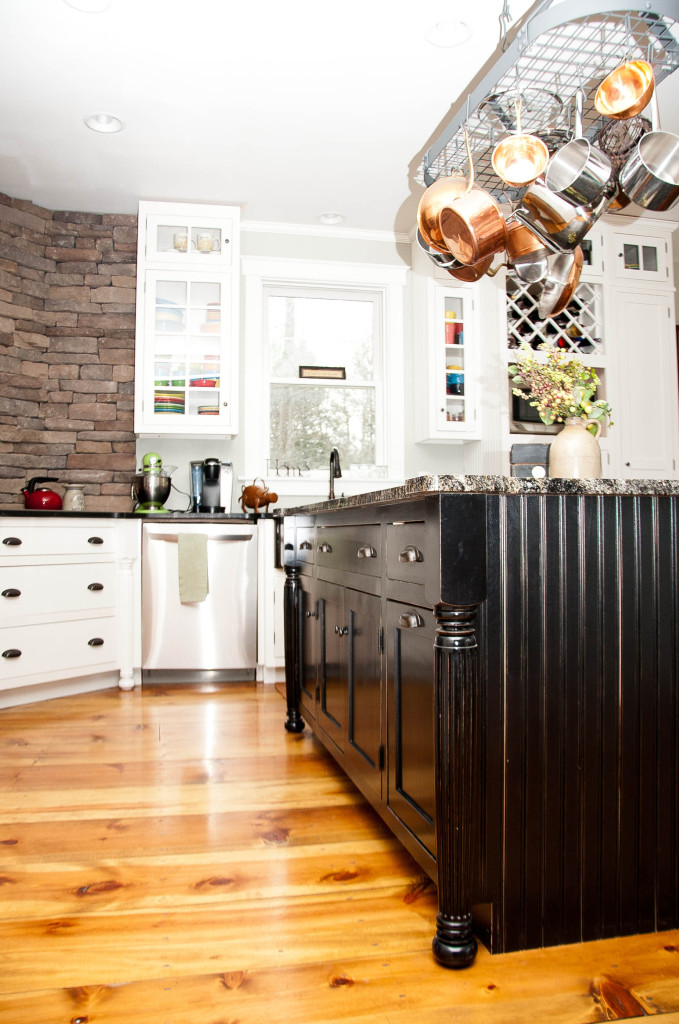 There are plenty of features you can add to your home. Custom selections could include the following:
There are plenty of features you can add to your home. Custom selections could include the following:
- Actual building materials: Lifetime warranty roofing shingles may be the most costly up front, but they can add more value to your home in the future.
- Outlet location: Outlets within 6 feet of water sources must follow specific safety measures. You should place outlets close to phone lines and cable hookups, especially in offices and entertainment rooms. Be sure to clearly define what you need during the design process.
- Location of laundry rooms: Upstairs laundry rooms may be more practical than carrying loads of laundry through multiple floors.
- Kitchen features: Cabinets, flooring and appliances all come with a variety of options, finishes and materials. As the homeowner, you have complete control based on your preferences.
- Flooring: Which flooring suits the look you’re going for in your new home? You have lots of options available, including carpeting, hardwood, laminate and tiles.
- Framing: Sidewall insulation is critical, as well as galvanized nails and floor joist screws. When you use the best materials, your home will last longer and need fewer repairs.
- Color selections: When building a new home, you select your features based upon your preferences. Think about your family and which colors suit your overall dynamic. You’ll need to choose colors for both the interior and exterior of your home, but if you need inspiration, you can talk to your builder for ideas.
- Indoor and outdoor lighting: A well-lit home is important. Make sure your outdoor lighting selections provide adequate coverage for entering the home at night or outdoor entertainment. For indoor lighting, make sure the lighting needs of each individual room will be met without the need for floor lamps. If you’re prioritizing lifelong value, consider energy efficiency with your lighting choices, like LED options.
- Safety: Hardwired smoke detectors are generally required by law and are important for protecting your family. Sprinklers may be a viable option, especially in the kitchen. If you live in an area prone to earthquakes, tornadoes, hurricanes or flooding, additional safety measures should be in place. Speak with your builder about these features.
Setting up Water and Sewer Hookups
Your home cannot run without proper sewer and water connections. You’ll need to take the following steps:
- Setting a date for the hookups: Your builder may complete this task for you, so check with them to find out your role in the process.
- Getting proper inspection: An installation inspection will examine your sewer and hookups, including plumbing and footings, to ensure everything works properly.
- Understanding additional expenses: Additional costs may arise during the process, so be sure to speak with your builder and research these expenses. You should also look into special exceptions that may apply to your land.
Landscaping and Final Cleanup
When the building process wraps up, you’ll need to take care of landscaping and conducting a final cleanup of your land. Consider the following:
- Plant choice and upkeep needs
- Neighborhood friendliness
- Native selections verses exotic plants and grasses
- Overall curb appeal
Make sure your home looks move-in ready, so there is no final clean-up needed prior to closing.
Move-In Day
Congratulations! Now that the building process is finished, you and your family can move in. During this process, it’s important to take care of the final steps:
- Choose how to move: Decide whether you’d prefer to hire a moving company or handle everything on your own. This choice is entirely up to you and depends upon your desired timeline.
- Plan it out: Consider where you plan to place your furniture by drawing rough sketches in advance. There’s never a better time to buy new furniture than when you’re moving into a new home.
- Take your time: Take the time to enjoy the process rather than rushing. Choose one room that can wait (an office or extra bedroom) and use it as your base. Focus on unpacking a certain number of boxes per day until complete.
But most importantly, you have a new home to enjoy! You can rest, relax and get acquainted with your neighborhood — throwing a housewarming party can spark friendships with your new neighbors and break the space in.
Build Your Dream Home With SDL Custom Homes
When you build with SDL Custom Homes, you’re in charge every step of the way. We offer pre-priced and fully custom home plans to accommodate your specific needs, and we listen to your input every step of the way — unless you’d prefer us to take the work off your shoulders. It’s all up to you.
Contact us today to get more information about how we can help you build the home of your dreams.

